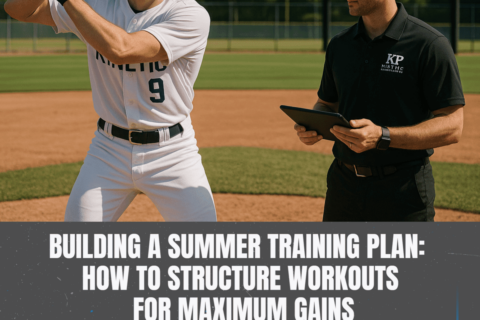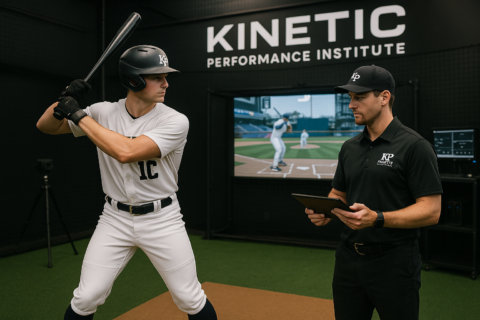The Riddle: Figuring Out The Elbows In Young Throwers
Elbow injuries have been a large concern in the youth baseball world for some time, but the information, prescriptions, and guidance have been scattered for quite awhile, while the injury rates of young throwers continue to rise. Just like many issues in the development world, the conundrum of youth elbow injuries is very complex, contextual, and has many layers that aren’t always easy to identify and prescribe.
The Elbow: A Complex Joint
The beginning of this, and most development examinations, is to acknowledge and understand the anatomical and physiological complexities. The elbow is a very complex joint that houses many different structures that make the joint one of the more unique in the body.

There are several reasons the elbow is such a complex joint…
- Bone Structure – 3 bones meet at the elbow joint (Ulna, Radius, Humerus) and interact with the soft tissue in unique ways.
- Muscle Structure – 23 different muscles interact with the elbow joint
- Ligament/Tendon Structure – With so many bone and muscle interactions, the ligaments and tendons have to perform many functions to move and stabilize the joint
- Hinge Structure – The elbow is technically classified as a hinge joint that’s primary function is extension and flexion. What makes the elbow unique as a hinge joint is that it is also has a fairly high degree of rotation, as the structures that rotate the forearm and hand are anchored in the elbow.
- Nerve Structure – The main nerve channels that we use in our hands have to run through the elbow. These nerve channels have to run through the joint pushed up against bone and navigate through a joint with a high degree of movement capability.
All of these anatomical and physiological features are quite a lot to be contained in what is considered a fairly small joint! There is a lot of action in the elbow and it’s one of the reasons the joint can be very tricky for the athletes that need to use it frequently (overhead sports).
The Young Baseball Player: A Constantly Evolving Situation
To try to solve the riddle of elbow issues in young ballplayers, understanding the anatomy and physiology of a growing athlete is just as important as understanding the elbow structure. An athlete going through, and getting out of, puberty is extremely complex and contextual. The body is going through dramatic changes and, given the complexity of the elbow, combining those two dynamics creates a complicated situation without very deep examination.

A young ballplayer going through and exiting puberty has many bodily changes taking place that could potentially affect their elbow health…
- Bone Structure – Children’s bones are predominantly cartilage at the younger ages and they harden into bone as they age. This is why children often break bones and rarely damage ligaments (the ligament is stronger), and adults often damage ligaments instead of breaking bones (the bones are stronger)
- Body Size – The ages surrounding puberty are often accompanied by rapid growth (usually height). This can create inconsistencies and strength/movement deficits that can put high amounts of tension on joints
- Hormones – Testosterone starts flowing at higher rates during puberty, leading to increases in strength, but often times the joints have not built up the resiliency to handle the stress the new found strength it is creating
- Movement Coordination & Capacity – A consequence of rapid physical growth and change is the decline in coordination and motor control. When a body grows a lot, it takes time to re-learn and control the infinite movement patterns that a body can perform. This can often lead to a breakdown in the functional movement patterns needed to keep joints healthy.
The human body is a complex organism and system. The human body going through puberty and growing is extraordinarily complicated. Understanding the dynamics of what the body goes through and experiences goes a long way in understanding the relationship between a young thrower and the elbow.
Bringing It Together: The Why & The How
Now that there is a baseline understanding of the anatomy and physiology of the elbow joint and the body, we can bring together the knowledge and provide context some of the different scenarios that could lead to elbow injuries in young ballplayers. Below is a list of potential reasons young throwers could injure their elbow, along with some prescriptions to prevent and/or adjust to an injury in that context…
- Thrower Has Too Much Velocity
- A young thrower that throws hard is at the highest risk of an elbow injury, as the joint is not strong enough to handle that kind of stress. High velocity young pitchers should never pitch on back to back days, should be limited in the amount of high stress pitches they throw in an outing, and should not pitch more than 8 months out of the year.
- Thrower Has Poor Movement Patterns
- For reasons outlined above, it is common for young throwers to have poor movement patterns due to lack of functional strength. Young throwers should be allowed to discover their own, unique movement patterns and immersed in a training environment that allows them to self organize and stabilize their movements
- Thrower Is Too Big
- Tall throwers, particularly those that have some velocity, might be at the highest risk of elbow injuries. They often experience the same issues outlined above, but those issues are exaggerated due to the leverage the body creates. These throwers need to double down on strength/movement training and monitor their workload and stress levels very carefully
Next Steps
The issue of elbow injuries is not going away and is often the case of a blessing and a curse… young throwers with high velocity are blessed, but their elbow might not be strong enough to handle that, and that can be the curse. The formula for how to keep elbows healthy in young throwers is rooted in the mindset that normally leads to success: immerse yourself in a true development system, prioritize training, align with coaches and a system that objectively approaches health and development, limit high risk pitching situations, and learn how to say NO to overzealous coaches that are in it for things other than your health and development. None of this can prevent elbow injuries in young throwers, but together they can mitigate the rising tide of elbow injuries.


